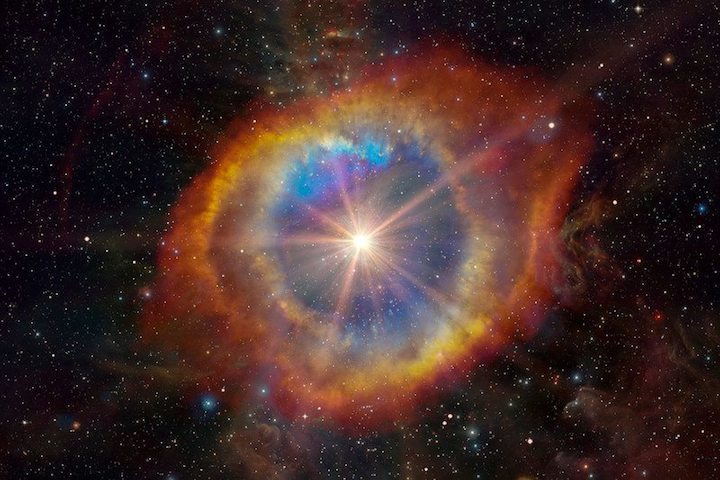27.03.2018
.
A star has been seen exploding faster than any other on record

The quickest supernova we’ve ever seen went from invisible to extraordinarily bright in only 2.2 days. It is the first of these speedy stellar explosions that’s been observed thoroughly enough to help us figure out exactly how they work.
Supernovae are massive explosions that happen when a star burns out. They usually take weeks or months after the death of the star to reach maximum brightness, and even longer to fade away. But Armin Rest at the Space Telescope Science Institute in Baltimore, Maryland and his colleagues found one in data from the Kepler Space Telescope that rose to peak brightness in less than 53 hours and faded back to half that brightness in 6.8 days.
Often, quick supernovae are dimmer than their longer-lasting counterparts, so they can be explained simply by invoking a weaker mechanism like a star that only partially exploded. But this one, called KSN 2015K, was just about as bright as a regular supernova, so it needed a different explanation.
Rest and his colleagues were able to take images of the supernova once every 30 minutes, making it the most thoroughly observed of the fast supernovae. “Usually you might have 1 or 2, maybe 3 measurements in 2.2 days, but we have a whole series of really strong measurements that allow us to test different models,” says Rest.
Shock wave
The researchers think KSN 2015K may have started out dim and then got an extra boost. Before the star went full supernova, it may have expelled a dying breath, releasing a dense shell of gas. Then, about 2 months later, the star exploded within its shell.
The initial explosion would have been invisible to us, but the debris that it spewed out would quickly slam into the gas surrounding it and create a powerful shock wave. At that point, the kinetic energy from the explosion would be converted into the blast of light that Kepler detected.
“When the explosion hits the shell, that’s when all this energy that we see is created,” says Rest. “All hell breaks loose once that happens.” The light would then dissipate faster because it isn’t being maintained by gradual radioactive decay like many regular supernovae.
So when we observe these strange supernovae, we may not even be seeing the actual explosions – it’s their aftermath that’s shining bright.
Journal reference: Nature Astronomy, DOI: 10.1038/s41550-018-0423-2
Quelle: NewScientist
